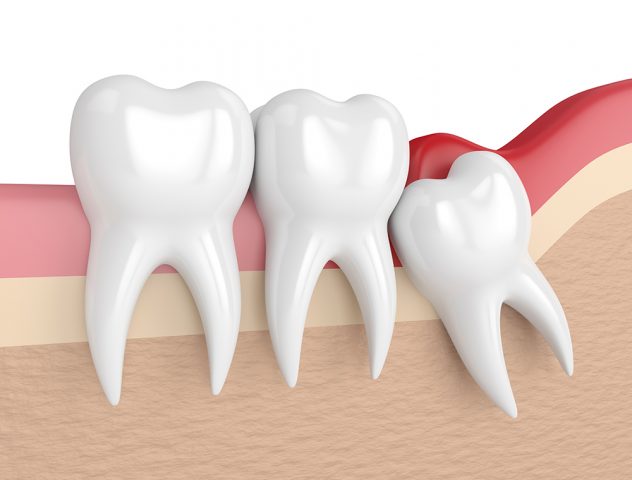Wisdom Extraction.

Wisdom Tooth Extraction
Wisdom teeth Extraction overview?
Wisdom tooth extraction is a surgical procedure to remove one or more wisdom teeth — the four permanent adult teeth located at the back corners of your mouth on the top and bottom.
If a wisdom tooth doesn’t have room to grow (impacted wisdom tooth), resulting in pain, infection or other dental problems, you’ll likely need to have it pulled. Wisdom tooth extraction may be done by a dentist or an oral surgeon.
To prevent potential future problems, some dentists and oral surgeons recommend wisdom tooth extraction even if impacted teeth aren’t currently causing problems.
What are “impacted wisdom teeth?”
In dental terminology an “impacted tooth” refers to a tooth that has failed to emerge fully into its expected position. This failure to erupt properly may occur either because there is not room enough in the jaw for the tooth, or because the angulation of the tooth is improper.
When should wisdom teeth be removed?
The following symptoms may indicate that the wisdom teeth have erupted and surfaced, and should be removed before they become impacted — meaning, the teeth have surfaced and have no room in the mouth to grow. However, each individual may experience symptoms differently. Symptoms may include:
– pain
– infection in the mouth
– facial swelling
– swelling of the gumline in the back of the mouth
Most oral health specialists will recommend an immediate removal of the wisdom teeth, as early removal will help to eliminate problems, such as an impacted tooth that destroys the second molar. According to the Australian Dental Association, third molar impaction is the most prevalent medical developmental disorder.
What problems are often associated with impacted third molars?
– bacteria and plaque build-up
– cysts development (a fluid-filled sac)
– tumor development
– infection
– jaw and gum disease
What is involved in the extraction procedure?
Wisdom tooth extraction surgery involves removing the gum tissue that presides over the tooth, gently detaching the connective tissue between the tooth and the bone, removing the tooth, and suturing the opening in the gumline.
What Can I Expect During the Healing Process?
During the normal healing process, you may experience initial swelling and discomfort in your gums and jaw, making it wise to plan ”taking it easy” for a few days after the surgery. Discomfort and swelling can be relieved by placing ice packs on your face. We may also prescribe pain medication to increase your comfort during the healing process and antibiotics if necessary. Other things you can do to help with the healing process include:
- Drink lots of liquids and limit your diet to soft foods after the bleeding stops.
- Avoid hard or crunchy foods for at least two weeks.
- Avoid brushing the teeth next to the ones that were removed until at least a day after surgery. When you do begin brushing the area again, be very gentle so as not to disturb the blood clot that forms in the socket. For the same reason, don not rinse your mouth vigorously, smoke, spit forcefully or drink from a straw during the healing process.
- Avoid alcohol the day of surgery and do not mix with pain medications.
- Call us if you have fever, persistent and severe pain, excessive swelling or bleeding, or any adverse reaction to your medication.
If you require any more information on Emergency Dentistry in Sydney please do not hesitate to contact us.







